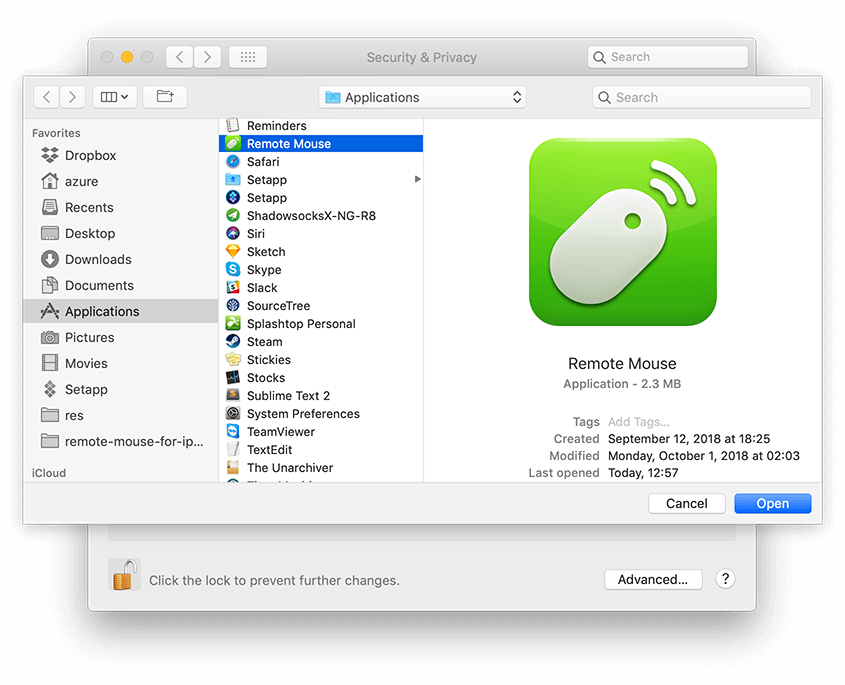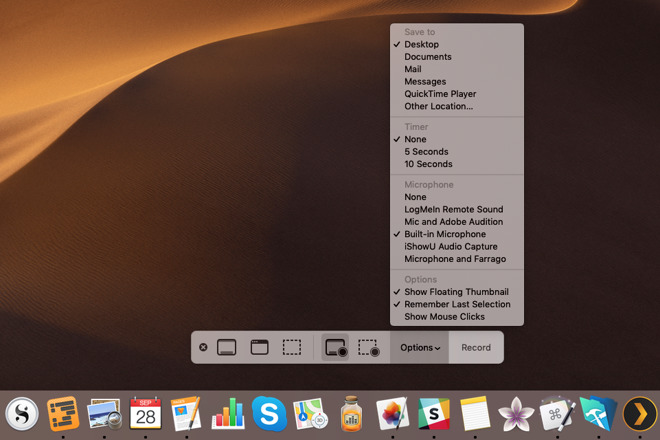| Desert pocket mouse | |
|---|---|
Least Concern (IUCN 3.1)[1] | |
| Scientific classification | |
| Kingdom: | Animalia |
| Phylum: | Chordata |
| Class: | Mammalia |
| Order: | Rodentia |
| Family: | Heteromyidae |
| Genus: | Chaetodipus |
| Species: | |
| Binomial name | |
| Chaetodipus penicillatus (Woodhouse, 1852) | |
The desert pocket mouse (Chaetodipus penicillatus) is a North American species of heteromyidrodent found in the southwestern United States and Mexico.[2] True to its common name, the medium-sized desert pocket mouse prefers sandy, sparsely vegetated desert environments.
The Mac Mouse is a multi-touch mouse that was first introduced to the public on October 20, 2009. It is supported by all versions of the Mac Operating System from MacOS Leopard to macOS Mojave. Hardware issues can occur out of nowhere. The same is the case with the Mac Mouse. Despite the amazing features it provides, it is known to cause glitches. Join this channel to get access to perks:https://my-store-11492526.creator-spring.com/To. Note: If you upgrade your Zoom Rooms Mac to Mojave or Catalina, keep the keyboard and mouse connected to the computer until you open Zoom and authorize access to the camera and microphone. You will need OS administrator access for the computer.
Description[edit]
Chaetodipus penicillatus is a medium-sized pocket mouse. The total length of adults usually does not exceed 180 mm. Coloration is grayish brown to yellowish gray and may be sprinkled with black. The pelage is coarse. This species lacks rump spines but has numerous, elongate rump hairs which are darker dorsally and lighter laterally. There is no lateral line. The underparts of the body and tail are whitish. The tail is heavily crested and is longer than the head and body, with average tail length being 109 mm. The soles of the hind feet are whitish and average hind foot length is 25 mm.
Geographic range and habitat[edit]

Chaetodipus penicillatus occurs in the southwestern United States and northern Mexico. The northern limit of its range is southern Nevada. It extends southwest into California and the northern Baha Peninsula and northwestern Mexico. Eastward it stretches into the southwesternmost parts of Colorado. From southern Nevada and southwestern Colorado the range of C. penicillatus proceeds southeast into Arizona, through southern New Mexico and southwestern Texas, and into northeastern Mexico. The desert pocket mouse prefers various arid, open desert environments, usually where the vegetation is rather sparse. These may include desert wash, desert succulent shrub, desert scrub, and alkali desert scrub. It prefers soft alluvial, sandy, or silty soils along stream bottoms, desert washes, and valleys, rather than rocky terrain. These pocket mice live in soils that may be vegetated with creosote bush, palo verde, burroweed, mesquite, cholla and other cacti, and short, sparse grass, as well as in lower edges of alluvial fan with yucca, mesquite, grama, and prickly poppy.
Six subspecies are currently recognised:[3]
- C. pencillatus pencillatus - south-central Arizona
- C. pencillatus angustirostris - southern California, eastern Baja California
- C. pencillatus pricei - southern Arizona, Sonora
- C. pencillatus seri - Tiburón Island
- C. pencillatus sobrinus - southern Nevada
- C. pencillatus stephensi - eastern California
Behavior[edit]
Chaetodipus penicillatus may be active all year round in some areas, though it is inactive in the winter in southern Arizona. This species is mainly nocturnal. It is aggressively solitary, with a home range of less than 1 acre. Pocket mice can burrow into hard-crusted soils by actually physically chewing their way through the hard portions of the soil. Their burrows, however, are usually excavated in silty, sandy, or gravelly soil and are used for refuges, seed storage, and neonatal care. The average lifespan of C. penicillatus is around one year.
Dietary habits[edit]
Chaetodipus penicillatus forages beneath a canopy of shrubs on sandy or gravely soils. It feeds primarily on seeds of forbs, grasses, and shrubs, although green vegetation and insects may supplement the diet. Seeds of mesquite, creosote bush, and broomweed have been found in the cheek pouches of desert pocket mice. Seeds are also stored in burrows and in dispersed caches throughout their territories. Although there is no direct evidence, this species probably acquires all of the water it needs from its food.[citation needed]
Reproduction[edit]
The mouse's breeding season is in the spring; adult females can give birth to one or more litters of two to five young during the spring and summer. Gestation lasts on average of 23 days. Incisors appear 9 days after birth, eyes open on day 14, and ears open no sooner than day 14. Many young females reach sexual maturity early and became pregnant while still in their juvenile pelage. Population has a turnover rate as high as 95%.

References[edit]
Mouse For Mojave Desktop

Mouse For Mojave Mac
- Arnolf, L.W. (1942). 'Notes on the life history of the sand pocket mouse'. Journal of Mammalogy. 23 (3): 339–341. doi:10.1093/jmammal/23.3.339b. JSTOR1375005.
- Biota Information System of New Mexico, 2000. Desert pocket mouse (On-line). Accessed November 18, 2000
- Bradley L, 1997. 'Desert Pocket Mouse' (On-line). Accessed November 17, 2001[full citation needed]
- Brylski, P, 2000. 'Desert Pocket Mouse' (On-line). Accessed November 17, 2001[full citation needed]
- Burt, W. H., Grossenheider, R. P. 1976. A Field Guide to the Mammals. Boston: Houghton Mifflin Company.
- Lee Jr., T.E.; et al. (1996). 'Speciation in the desert pocket mouse (Chaetodipus penicillatus Woodhouse)'. Journal of Mammalogy. 77 (1): 58–68. doi:10.2307/1382709. JSTOR1382709.
- Utah Division of Wildlife Resources, 2001. 'Desert Pocket Mouse' (On-line). Accessed November 17, 2001[full citation needed]

Mouse Mojave
- ^Linzey, A.V.; Timm, R.; Álvarez-Castañeda, S.T.; Castro-Arellano, I. & Lacher, T. (2008). 'Chaetodipus penicillatus'. IUCN Red List of Threatened Species. 2008. Retrieved 18 January 2009.old-form url Database entry includes a brief justification of why this species is of least concern
- ^Patton, J.L. (2005). 'Family Heteromyidae'. In Wilson, D.E.; Reeder, D.M (eds.). Mammal Species of the World: A Taxonomic and Geographic Reference (3rd ed.). Johns Hopkins University Press. p. 855. ISBN978-0-8018-8221-0. OCLC62265494.
- ^Mantooth, S.J.; Best, T.L. (2005). 'Chaetognathus pencillatus'. Mammalian Species. 767: Number 767: pp. 1–7. doi:10.1644/1545-1410(2005)767[0001:CP]2.0.CO;2.